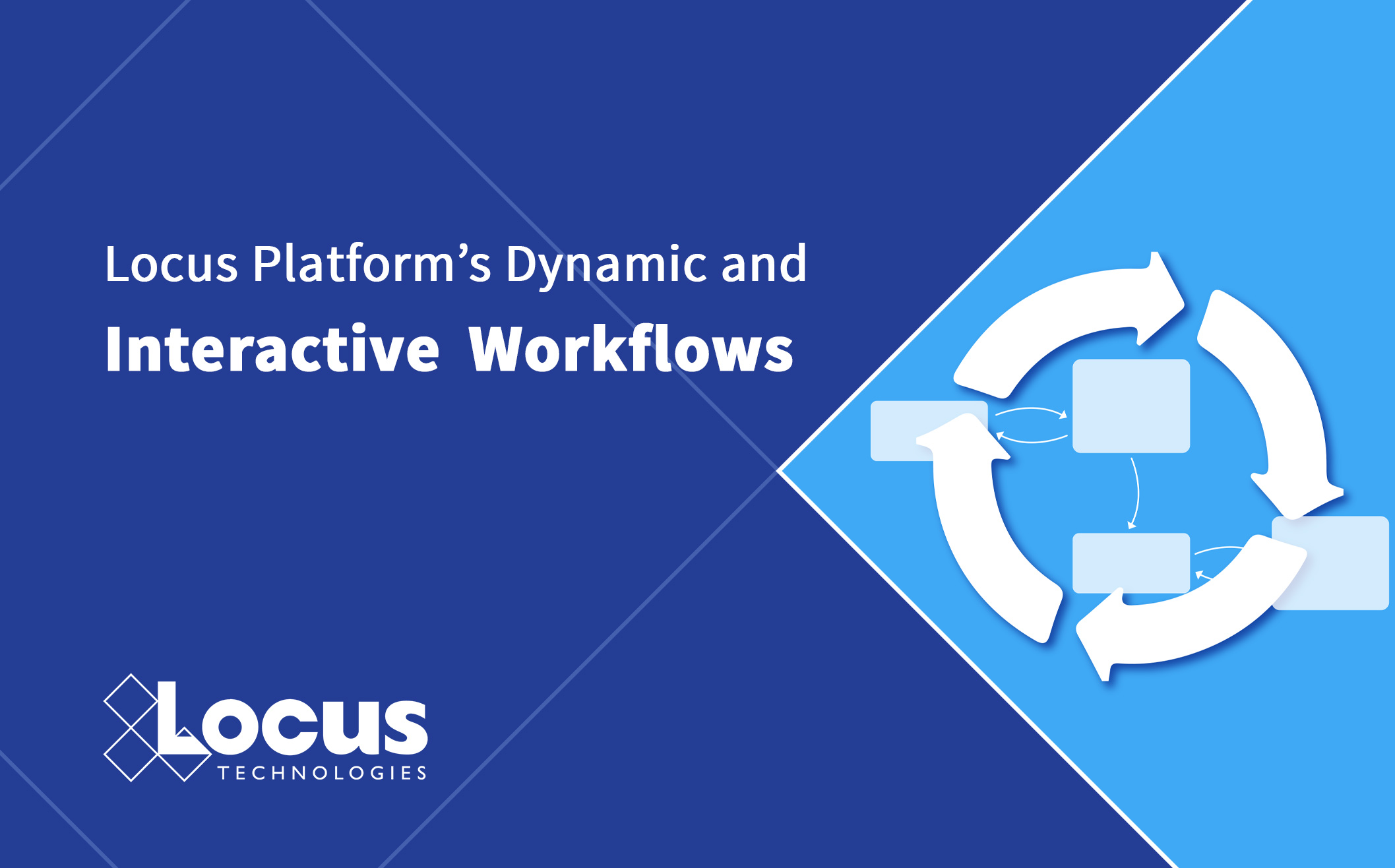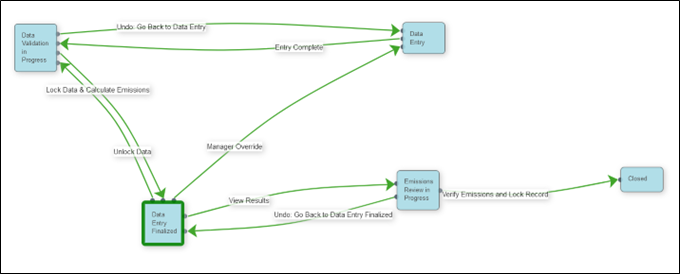
Our EHS compliance software, Locus Platform, offers numerous tools to complement your business processes and compliance strategies, such as notifications and dashboards. Workflow is another great tool, and it is multi-dimensional in nature. It can be added to any entity to:
- Enforce structure and sequential steps that can accommodate a complex, multi-step business process or task
- Divide tasks between users or user roles and enable collaboration
- Issue efficient reminders and notifications
- Easily track the status of various tasks.

The sample workflow design below illustrates how sequential steps and statuses are added in to guide the user(s) through a complex process.
Actions and statuses are displayed in entity records, to make it super simple and intuitive to follow/use:

The blue buttons shown are the actions the user can take to proceed forward to the next step or go back a step. The current step the record is at is shown as the Workflow Status (on the top left corner next to the green dot), easily pulled into views and dashboards.
Workflows are visual lifecycles allowing users to track their position in a multi-step process and record each step taken by the team (see an example below).

A well-designed Workflow should operate like a relay race, with the baton passing to new users with each step. These users will complete their section of the record and then move the process forward with an action button, immediately notifying users that the record is ready for their input. If users discover that a prior step wasn’t completed to satisfaction, they can move to the last Workflow step and request the necessary changes.
Workflows allow for enhanced security and customization for entity records. While present in our Task and Compliance Management application, a Configuration Workbench License allows organizations to develop original Workflows for their unique needs or work with Locus to do the same.
Reach out to our product specialists today to learn how you can use Workflows to help with complex multi-step processes, tracking and compliance strategies.
Locus is the only self-funded water, air, soil, biological, energy, and waste EHS software company that is still owned and managed by its founder. The brightest minds in environmental science, embodied carbon, CO2 emissions, refrigerants, and PFAS hang their hats at Locus, and they’ve helped us to become a market leader in EHS software. Every client-facing employee at Locus has an advanced degree in science or professional EHS experience, and they incubate new ideas every day – such as how machine learning, AI, blockchain, and the Internet of Things will up the ante for EHS software, ESG, and sustainability.



